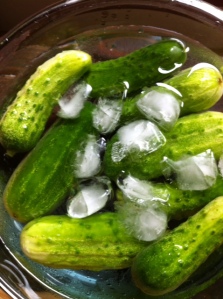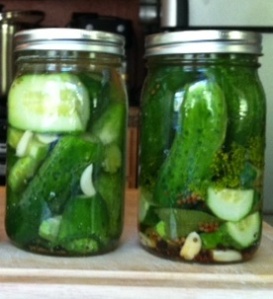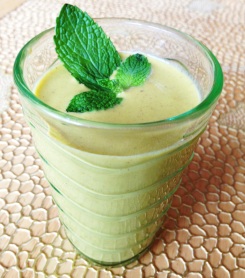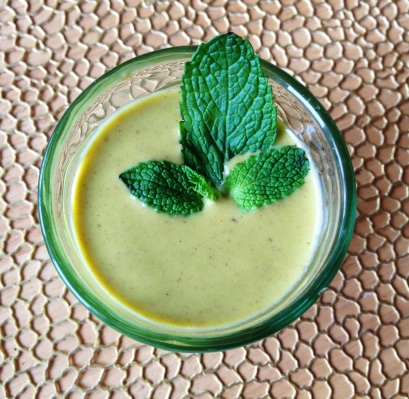Sutton Island is a small island just off the coast of Mount Desert Island in Maine. There are only 22 houses on the island and the only way to get there is by boat. Each time I’ve gone there, I feel as if I’ve slipped through a portal into another dimension.Walking in the forest on Sutton, we were bouncing, stepping on soft glowing green lichen and moss covered mounds, breathing in sweet air perfumed by the most delicate blend of sea salt and pine needles.
I spend my time there literally not believing my eyes, charmed and overwhelmed by the combination of elegant old money New England families’ summer mansions and the raw and rustic beauty of the rocks, woods, lobstermen’s boats, open skies, and sparkling ocean. To spend time in this watery world is a gift. 
A gift that I came to share through the love and generosity of my Detroit family. There is a perhaps surprisingly deep historic connection between this awe-inspiring tranquil island off the coast of Maine and the awe-inspiring intense city in the middle of the country. The Cranberry Isles (of which Sutton Island is a part) were granted (in the grand European tradition of giving people land that didn’t belong to them) to the Sieur de Cadillac back in the mid-1600’s, before Cadillac made his way inland to develop Detroit as a trading post. 
Centuries later, Grace Lee Boggs and Jimmy Boggs, started a decades long tradition of spending August on Sutton Island with other visionaries and organizers working to transform society. They published a book sharing the questions and ideas that came out of these gatherings. Since then, our generation has been welcomed there by Shea Howell, the most wise, good-humored, open-hearted, warm, grounded mentor and friend. She shares with us the secrets of the forest, the history of the islands, the stories of the houses. She is our guide to the goodness of this place. 
After our return to the mainland a few weeks ago, Kymberlie, a dear friend and fierce mama from Maine originally, wrote to all of us who had ventured there together:
“I could not have even imagined what magic that tiny ocean paradise had in store, and I feel like it was such a gift to get to discover it with you. I’m also really happy about Elliot getting to romp around with all of you awesome grownups. It’s hard to believe that a week ago we were playing in sea spray at the edge of the continent, eating lobster daily and sunning ourselves with mid-day glasses of rosé in hand. I’m thinking about how to incorporate a little Sutton Island into my daily life…suggestions?” 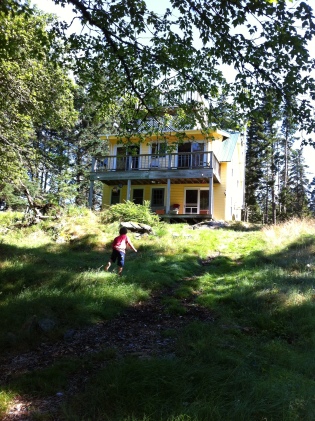
Given that we experienced such joy and sense of place through kayaking out to the rock right beyond our shore to gather mussels, boating to the next island over to get lobster directly from the fishermen’s cooperative on their collectively owned dock, walking through the forest foraging chanterelles and cranberries, and strolling through our neighbor’s garden picking herbs, sharing some of the menus and recipes for the meals we made together is one of the most concrete ways we could think of for incorporating the essence of Sutton Island into our daily lives! 
The reason that we made it all the way out to this dream land on the edge of things, is one of my favorite people on the planet- Mike Medow. He is an infrastructure man, handling the business of pleasure and the work that makes the good work possible. The entire time we were there, so aware of the precious nourishment we were getting, we were strategizing about how to sustain our connection to this place and widen the circle of people who could come revel in its magic. So we’re beginning by giving everyone a taste. Perhaps in the future, you’ll join us at the table!
Here are three recipes for dishes we really enjoyed. I’ve also included the menus for each meal. It’s amazing how much just knowing what we ate and how we ate it can give you a sense of our time on the island! Kymberlie and her brother, Nick, shared some of these photos and Kymberlie helped remember and describe all of the sumptuous feasts.
Fig Manhattan
2 oz Bourbon
1 oz sweet Vermouth
1 teaspoon fig preserves
Shake vigorously with ice in a cocktail shaker (or mason jar if you’re in a rustic cabin like we were). Pour into a rocks glass over a few cubes of ice.
Romesco Sauce
1/2 cup extra virgin olive oil
2 roasted red peppers (see below for the process)
2 cloves of garlic
2 tomatoes
2 or 3 tablespoons sherry or white wine vinegar
1/2 cup slivered toasted almonds
a dash of cayenne
1/3 of a baguette or a couple of slices of another kind of bread
fine sea salt and freshly ground pepper to taste
I like mine nice and smooth and creamy so I throw all of the ingredients in a strong blender and womp it up. If you want more texture, use a food processor.
To roast the red peppers, place each on the open flame of a gas burner. Use tongs to rotate it until each side is charred and blistering. Then remove them from the heat and place in a tupperware and close the lid to “sweat” them. After about 15 minutes, once cool enough to touch, peel the skin off, slice them open, scrape out the seeds, and then add into the blender.
Wifey Salad
INGREDIENTS
1 bunch of lacinato kale de-stemmed and shredded
3 carrots grated
2 large beets roasted and cubed
2 cups of cooked farro
4 or 5 eggs hardboiled, peeled, and chopped
1/2 cup toasted sunflower seeds or pepitas
1 block of feta crumbled
DRESSING
1/4 cup of olive oil
1/2 cup sour cream or yogurt
juice of 2 lemons
2 tablespoons of balsamic vinegar
2 or 3 tablespoons of tamari sauce
a few dashes of hot sauce
2 cloves of garlic
a big handful of dill
a big handful of parsley
1 or 2 tablespoons of yellow mustard
1 or 2 tablespoons of honey
salt and pepper to taste
To make the dressing, just throw all of the ingredients in a blender! Adjust the flavor according to your taste- if you want more brightness/acidity, add more lemons. If you want it sharper, add another clove of garlic. You want the dill to be a prominent flavor because that’s what makes the salad so refreshing. So add more if it isn’t coming through enough. And of course salt and sweetness always add depth and bind flavors together more so if it needs that, adjust the salt and/or honey.
To make the salad, first cook about 1 cup of farro in about 1.5 cups of broth. I make my own vegetable stock but you can use whatever you have. Bring the farro and broth to a boil and then cover and simmer for a while. Check after 10 minutes. You should turn it off when the farro has a nice chewiness but isn’t hard at all. There might be some liquid left- that’s ok! Lightly and briefly massage the shredded kale with a drizzle of olive oil. Add the grated carrots, roasted and cubed beets, and the farro with whatever liquid is left in it (that will help soften the kale a bit and add flavor to the dressing). Add the dressing and toss thoroughly. Then add in the feta, eggs, and seeds and toss lightly- just enough to integrate them.
Curry Night
Coconut curry with ginger, basil, kale, zucchini, brown rice
Marinated and baked tofu
Stir-fried shiitake mushrooms with garlic scapes
After dinner: Fireplace roasted smores and fig Manhattans
Frittata Breakfast
Cherry tomatoes, cheddar, chard, leek
Lobsterpocalypse
Corn on the cob
Garlic roasted new potatoes with crème fraiche and chives
Green salad
Cozy Afternoon Delight
Orzo, chickpea, spinach soup
Dollop of sour cream
Taco Bonanza
Mussels in coconut basil curry broth
Roasted garlic, tomato, cilantro salsa
Romesco Sauce
Avocado Cream
Chickpeas sautéed in garlic, onion, cumin, lemon
Kale salad with carmelized shallots, feta
Spanish rice
Punch: Bourbon, Campari, Domaine de Canton, Lemon, Soda, Prosecco
Southern Comfort Brunch
Smoked Gouda Grits
Poached Egg
sautéed kale in special sauce
Salsa and romesco
Dockside Happy Hour
Cocktail: Cava, Campari, Gin, Lemon, Vermouth
Snack: Basil, balsamic, garlic marinated and roasted fairytale eggplant with sliced baguette and basil crème fraiche
Farewell Midnight Banquet
linguine with pan roasted chanterelles, parsley, shallots, and parmesan
Garlic roasted new potatoes with crème fraiche and chives
Salad: mixed greens, corn, tomatoes, cucumbers in an herb, yogurt dressing
Baked haddock with lemon, parsley, dill, garlic, and paprika
Blueberry Pie from Little Notch Bakery
Breakfast for the road
Frittatini with zucchini, cheddar, onions, roasted red peppers




